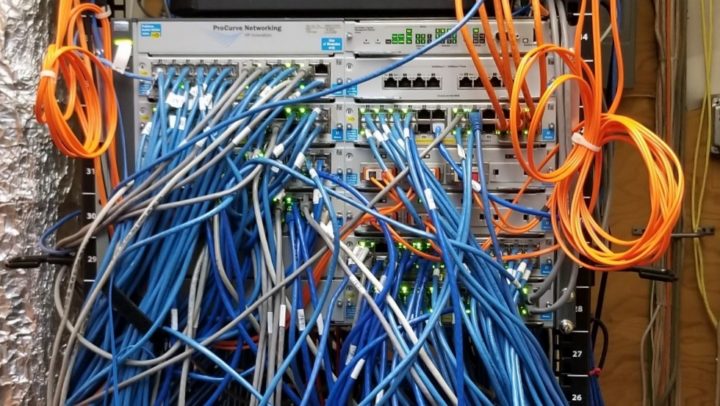
Upgrading the Structured Cabling of Your Company – Part 1
 When your company expands and network requirements change, it may be a great opportunity to perform a structured cabling upgrade. As is frequently the case, networks undergo unpredictable growth, resulting in technicians adding a variety of hardware of inconsistent quality from several different manufacturers one device at a time.
When your company expands and network requirements change, it may be a great opportunity to perform a structured cabling upgrade. As is frequently the case, networks undergo unpredictable growth, resulting in technicians adding a variety of hardware of inconsistent quality from several different manufacturers one device at a time.
Typically, network performance decreases with each new item of equipment added. There may come a moment when the network is incapable of supporting user traffic. This article will discuss steps a business can take to prevent this situation.
Site Survey
Performing a site survey will allow the network development team to gather information regarding your facility and current cabling system. The study will provide data that will be the project’s foundation. A site survey will usually involve the items summarized below.
- Determination of the amount and kinds of devices required for particular wired and wireless functions.
- Note the configurations loaded onto current devices.
- Create the physical layout of the current network infrastructure.
- Sketch locations of cable runs, wiring closets, and outlets on a floor plan, making a physical topology a reference during the upgrade.
- Map logical topology to display data pathways and locations of functions like routing.
Network Requirements
The network development team will meet with company personnel to determine current network requirements. Interviewing all departments will provide the most accurate projection of future network needs. The information the team will need is summarized below.
- The present count of network users and the number expected to be added over the next year.
- Which applications the network infrastructure must support. For example, will video conferencing and VoIP need to be supported by the structured cabling?
- Which new services are presently needed or will be needed that the existing network does not now support.
- Expectations regarding uptime and dependability will help determine required system redundancies.
Progressive Office Cabling
Founded in 1986, Progressive Office’s success has been a direct result of years of commitment to seeking cost-effective solutions. Working together, Progressive teams are committed to getting your data cables installed and operating while minimizing disruption and downtime. Call our toll free number (800) 614-4560 today.

The Four Main Advantages of Structured Cabling
 If you want to get the advantages of a structured cabling system, you will first have to switch from your outdated point-to-point cabling system.
If you want to get the advantages of a structured cabling system, you will first have to switch from your outdated point-to-point cabling system.
Point-to-point makes it hard for a network to expand and increase its capabilities with new technology. As networks get bigger, rapid transmittals of large volumes of data become even more important, and doing so is very difficult with a point-to-point system.
In order to cope, a growing number of companies are making the transition to structured cabling. Below are the advantages for those who modernize.
Aids Future Planning
The effective service life of a cabling system averages 15 years, which is up to three times the lifespan of most devices. It will be impossible to perfectly project the growth of your business and the IT equipment your company will acquire. Fortunately, a structured cabling system can play a significant part in future proofing your IT infrastructure.
Decreases Repair Downtime
A structured cabling system is divided into several groups of devices that are connected to their own local cabling panel. This configuration will help your IT staff find problems and solve them faster. In addition, the work of employees will not suffer disruption if the cabling panel that is being serviced is not connected to their devices.
Flexibility
Structured cabling will ease the process of replacing devices as your business grows. IT staff can quickly disconnect an outdated device and connect a new one to the nearest cabling panel. Making changes in the network itself as your company expands will also be much easier and faster.
Investment for the Future
Making the switch from a point-to-point to structured cabling system will not be inexpensive. Installation expenses can range from $100 to $500 per connection. Organizations located in older buildings that have limited easy access to ceilings and subfloors should anticipate more costs. However, the outlay will eventually bring dividends by enabling employees to become more productive and reducing IT expenses over time.
Progressive Office Cabling
Founded in 1986, Progressive Office’s success has been a direct result of years of commitment to seeking cost-effective solutions. Working together, Progressive teams are committed to getting your data cables installed and operating while minimizing disruption and downtime. Call our toll free number (800) 614-4560 today.








